The Unfussy Charm of the Bleeding Heart: Your Guide to an Easy-Life Garden Classic
Discover why the beautiful bleeding heart is one of the best plants for beginner gardeners in the UK. Our complete guide covers planting, care, and more.
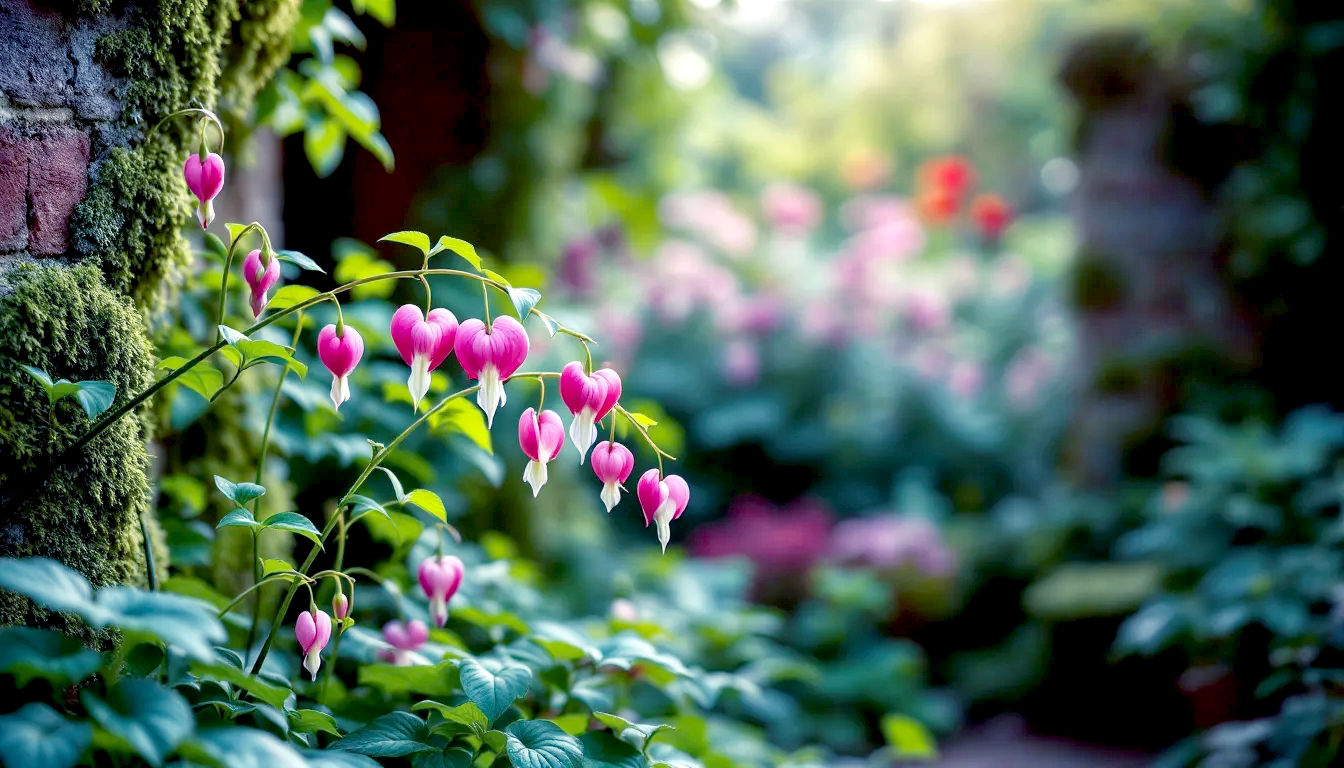
This post may contain affiliate links. If you make a purchase through these links, we may earn a commission at no additional cost to you.
Step into almost any classic British cottage garden, especially in that soft, dappled light of late spring, and you’re likely to see them. Dainty, heart-shaped flowers, each tipped with a perfect little droplet, dangling elegantly from arching stems. They look delicate, almost impossibly so, like something from a fairy tale. This is the bleeding heart, a plant that looks like it demands the skill of a seasoned expert but is, in reality, one of the most forgiving, reliable, and utterly charming plants a beginner can ever hope to grow.
If you’ve ever felt that pang of “gardening envy,” staring at a neighbour’s lush borders while yours look a bit, well, sad, then this plant is for you. It’s a garden hero in disguise. It doesn’t demand constant fussing, survives our often gloomy and damp weather with cheerful resilience, and comes back year after year like a faithful friend. It’s the sort of plant that makes you feel like a brilliant gardener, even if you’re still figuring out which end of the trowel to use.
This guide is your complete introduction to the world of bleeding hearts. We’ll explore everything from their fascinating history and the stories behind their name to the simple, practical steps of planting and caring for them in your own patch of Britain. Forget complicated rules and intimidating botanical jargon. Think of this as a friendly chat over the garden fence, designed to help you grow a plant that will bring you nothing but joy.
What Exactly Is a Bleeding Heart?
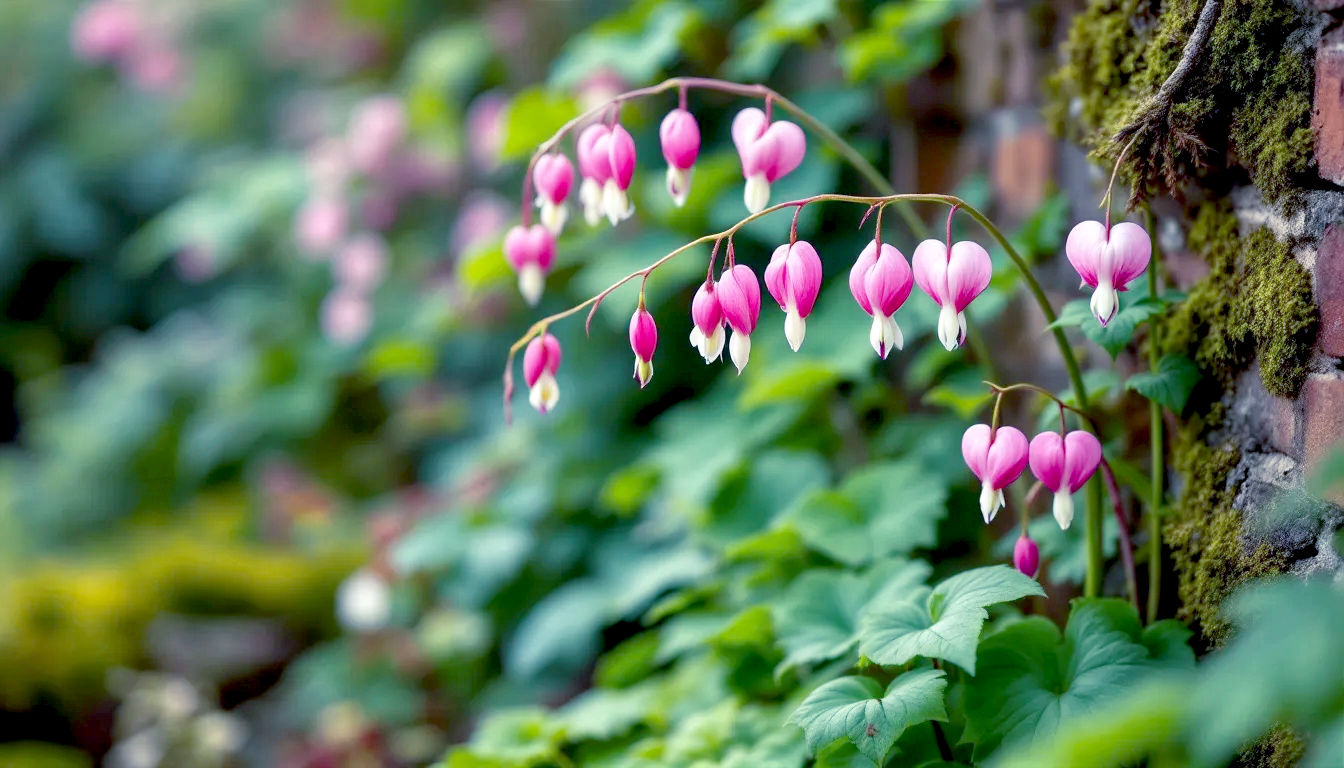
Before we get our hands dirty, let’s get properly acquainted. The bleeding heart is a shade-loving perennial plant. Now, don’t let that word ‘perennial’ scare you. It’s actually the best word a lazy or beginner gardener can hear. It simply means it’s a plant that lives for more than two years. You plant it once, and it will die back in winter and then, like magic, reappear the following spring. It’s the ultimate in low-effort, high-reward gardening.
The most common variety you’ll see is Lamprocapnos spectabilis (it used to be called Dicentra spectabilis, and you’ll still see that name on labels). It’s the classic one with pink, heart-shaped outer petals and a white inner petal that looks like the ‘drop’. They hang in a perfect row from stems that arch over gracefully, a bit like a fishing rod with a prize catch on every hook.
But it’s not just about the flowers. The leaves are beautiful too. They are soft, fern-like, and usually a lovely shade of grey-green or blue-green. They create a lush, leafy mound that looks great in a shady corner even before the flowers appear.
Key Characteristics at a Glance:
- Plant Type: Herbaceous Perennial (dies back in winter, regrows in spring).
- Flowers: Unmistakable heart-shaped blooms in pink, white, or red.
- Foliage: Fern-like, soft, and deeply lobed leaves.
- Height: Typically grows to about 2-3 feet (60-90 cm) tall.
- Spread: Forms a clump about 2-3 feet (60-90 cm) wide.
- Blooming Season: Late spring to early summer (usually April to June in the UK).
- Hardiness: Fully hardy in the UK. It can handle our cold winters without any trouble.
One of the bleeding heart’s quirks, which often confuses new gardeners, is that it’s an ephemeral. This is another fancy word with a simple meaning: it has a short and glorious life above ground. After its beautiful flowering display in spring, the foliage will start to yellow and die back by mid-summer, especially if it’s in a sunny spot. It’s not dead! It’s just going dormant, storing up all its energy in its roots for next year’s show. This is perfectly normal and a key reason it’s so low-maintenance. Once it’s done, you can pretty much forget about it until the next spring.
Why Bleeding Hearts Are Perfect for Beginners
So, what makes this plant the ideal starting point for anyone new to gardening? It boils down to a few simple, wonderful traits.
1. They Are Incredibly Low-Maintenance
This is the number one reason. Bleeding hearts are the opposite of a demanding, high-maintenance plant. They don’t need constant feeding, pruning, or spraying. Find them a decent spot, plant them correctly, and they will largely take care of themselves. There’s no complex pruning technique to learn. Once the foliage dies back in summer, you can simply cut it to the ground if it looks untidy, or just leave it to disappear on its own. They are the definition of “plant it and forget it.”
2. They Thrive in Shade
Every garden has one: that awkward, shady spot where nothing seems to grow. Perhaps it’s behind a shed, under a large tree, or along a north-facing wall. These are often the problem areas that leave beginners stumped. Well, the bleeding heart sees that shady spot and calls it home.
While most flowering plants crave sunshine, the bleeding heart prefers partial shade. It loves the dappled light under trees or a spot that gets a bit of morning sun but is shielded from the harsh afternoon glare. This makes it an invaluable problem-solver for tricky parts of the garden, turning a gloomy corner into a spring highlight.
3. They Are Tougher Than They Look
With their delicate, heart-shaped flowers, you’d be forgiven for thinking they are fragile. In reality, bleeding hearts are surprisingly robust. They are fully hardy across the entire UK, meaning they can withstand freezing winter temperatures without needing any special protection. They aren’t particularly fussy about soil type either, as long as it isn’t waterlogged or bone dry. This resilience takes a lot of the worry out of gardening. You don’t have to stress every time there’s a late frost or a wet week.
4. They Have a Long Lifespan
A bleeding heart is an investment in your garden’s future. These are not flimsy annuals that you have to replace every year. A well-sited bleeding heart can live for decades, getting a little bigger and better each spring. There’s a real sense of satisfaction in watching a plant you put in the ground years ago return each April, a reliable marker that spring has truly arrived.
5. Pests and Diseases Rarely Bother Them
New gardeners often dread the battle with pests and diseases. The good news is that bleeding hearts are generally untroubled by most common garden nasties. Slugs and snails might have a nibble on the new shoots in spring, but they are rarely a major problem. They are also resistant to deer and rabbits, which is a huge bonus if you live in a more rural area. This means you’re unlikely to need any chemical sprays, making them a great choice for a wildlife-friendly garden.
A Little Bit of History: From Far East to English Garden
The classic bleeding heart, Lamprocapnos spectabilis, has a rather romantic backstory. It’s not a British native. It originally comes from the forests of northern China, Korea, and Siberia.
It was ‘discovered’ by the West in the 1840s by the Scottish botanist and renowned plant hunter, Robert Fortune. He was on an expedition in China, tasked with finding new and exciting plants for the Royal Horticultural Society (RHS). When he came across the bleeding heart, he knew he had found something special. He sent live specimens back to Britain, and when it was first displayed at an RHS show in 1847, it caused a sensation. The Victorians, with their love for symbolic flowers and romanticism, fell head over heels for it.
Its unique shape immediately captured the imagination. The name ‘bleeding heart’ is a direct translation of its appearance. In the Victorian ‘language of flowers’, it symbolised unrequited or spurned love, but also deep and passionate love. It quickly became a must-have plant for the fashionable woodland gardens and shady borders of Victorian estates, and its popularity has never really faded since. It transitioned from a collector’s novelty to a cottage garden staple, a position it still holds today.
Choosing the Right Bleeding Heart for Your Garden
While the classic pink Lamprocapnos spectabilis is the most famous, there are a few other varieties worth knowing about. They offer different colours and sizes, but all share that same easy-going nature.
Lamprocapnos spectabilis ‘Alba’
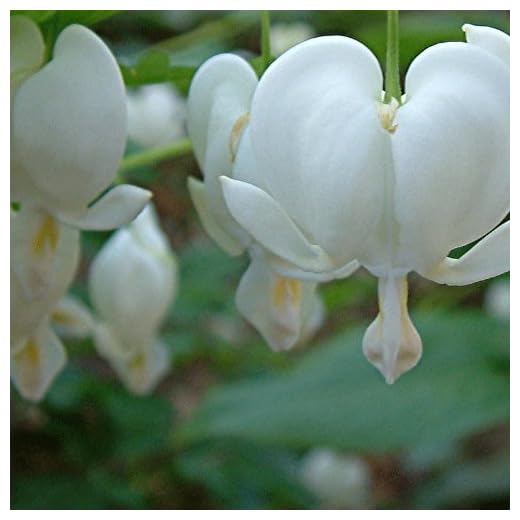
This is a pure white version of the classic bleeding heart. It’s incredibly elegant and brings a wonderful brightness to shady areas. The flowers are pure white, without a hint of pink, and they look stunning against the fresh green foliage. It’s perfect for a more serene, contemporary garden design or a classic white garden border. It grows to the same size as the pink variety and has identical needs.
Lamprocapnos spectabilis ‘Valentine’
For those who want a bolder look, ‘Valentine’ is a fantastic choice. It has vibrant, cherry-red flowers with the classic white ‘drop’. The stems are a darker, reddish-brown, and even the foliage can have a slight bronze tint when it first emerges. It provides a much more dramatic splash of colour than the soft pink of the original.
Fringed-Leaf Bleeding Hearts (Dicentra)
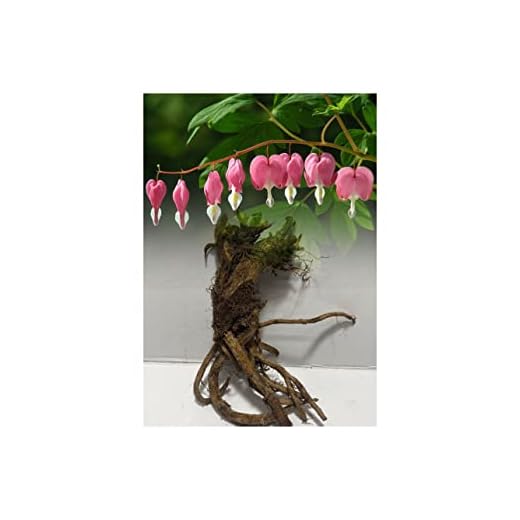
These are slightly different from the classic Lamprocapnos. They are generally smaller, with more delicate, ferny foliage that often has a blue-grey hue. Their flowers are more elongated and less distinctly heart-shaped. The huge advantage of these types is that they don’t go dormant in summer. Their foliage stays looking good all season long. They also tend to flower for a much longer period, often from late spring right through to autumn.
Dicentra formosa
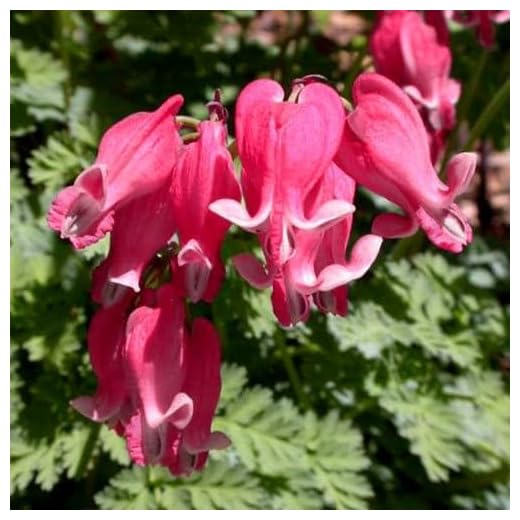
This is the Western bleeding heart, native to North America. It’s a lower-growing, spreading plant, perfect for ground cover in a shady spot. It has pinkish-purple flowers and very fine, ferny leaves.
Dicentra ‘Luxuriant’: This is probably the most popular of the fringed-leaf types. It has cherry-pink flowers and beautiful blue-green foliage. It flowers its socks off for months on end and is incredibly reliable.
Dicentra ‘King of Hearts’: A stunning hybrid with larger, rose-pink flowers and lacy, blue-grey foliage. It’s a real showstopper and flowers for a very long time.
For an absolute beginner, the classic Lamprocapnos spectabilis is probably the best place to start, as it’s the most widely available and robust. But if its summer dormancy bothers you, one of the fringed-leaf varieties like ‘Luxuriant’ is an equally brilliant and easy-care choice.
How to Plant and Grow a Bleeding Heart: A Simple Step-by-Step Guide
Right, let’s get down to the practical part. Growing a bleeding heart is wonderfully straightforward. Follow these simple steps, and you can’t go wrong.
Step 1: Find the Perfect Spot
This is the most important decision you’ll make. Get the location right, and the plant will do the rest. Remember the golden rule: bleeding hearts love partial shade.
- Look for: A place that gets some gentle morning sun but is protected from the hot afternoon sun. Underneath high-branched deciduous trees is perfect, as the plant gets sun in early spring before the leaves come out, and then dappled shade in summer. The north or east-facing side of a house, wall, or fence is also ideal.
- Avoid: South-facing spots that get baked in sun all day. This will scorch the leaves and cause the plant to die back very quickly. Also, avoid very deep, dark shade where it will struggle to flower well. It needs some bright, indirect light.
- Think about wind: The flower stems, while strong, can be snapped in very exposed, windy locations. A bit of shelter is helpful.
Step 2: Prepare the Soil
Bleeding hearts are not overly fussy, but they do have one main preference: they like soil that is moist but well-drained. This sounds like a contradiction, but it just means they don’t want to sit in a puddle, nor do they want to be in soil that dries out completely.
- The ideal soil: A rich, humusy soil, like you’d find on a forest floor.
- How to achieve it: Before planting, it’s a great idea to improve the soil by digging in some organic matter. This is just decomposed natural material. You can use well-rotted manure, garden compost, or leaf mould. This will help heavy clay soils drain better and help sandy soils hold onto moisture.
- Dig a generous hole: Make the hole about twice the width of the plant’s pot and about the same depth. Loosen the soil at the bottom of the hole with a fork.
Step 3: Planting Your Bleeding Heart
You can buy bleeding hearts as potted plants from a garden centre in spring, or as ‘bare-root’ plants in late autumn or winter. Potted plants are easier for beginners.
- When to plant: The best time to plant is in the spring or autumn when the soil is moist and not too cold.
- Removing from the pot: Gently squeeze the pot to loosen the plant. Tip it upside down while supporting the top of the plant with your other hand. It should slide out easily. Don’t pull it out by the stem.
- Positioning the plant: Place the plant in the centre of the hole. The top of its root ball should be level with the surrounding soil surface. Planting it too deep can cause the crown (where the stems meet the roots) to rot.
- Backfilling: Fill the hole back in with the soil you dug out, gently firming it down around the root ball with your hands to get rid of any large air pockets.
- Watering: Give the plant a really good soak with a watering can. This helps settle the soil around the roots.
Step 4: Ongoing Care (The Easy Bit)
This is where the low-maintenance part really kicks in.
- Watering: For the first year, water your bleeding heart regularly, especially during dry spells, to help it get established. Once it’s mature, you’ll only need to water it during prolonged periods of drought in summer. If it’s in a nice shady spot with good soil, the British rain will often do most of the work for you.
- Feeding: Bleeding hearts are not greedy plants. You don’t need to give them lots of fertiliser. Simply applying a mulch of garden compost or well-rotted manure around the base of the plant each spring is plenty. This will slowly release nutrients into the soil and help keep it moist.
- Pruning: There is no real pruning to do. The only job is to tidy up the foliage in summer once it has turned yellow and died back. You can cut the old stems right back to the ground. That’s it!
- Staking: Usually, bleeding hearts don’t need any support. Their stems are naturally strong enough. However, in a very windy spot, or if the plant is particularly large and laden with flowers, a discreet stake or a hoop support can prevent the stems from snapping.
Common Questions and Worries for Beginners
Even with an easy plant, a few things can cause concern for a new gardener. Here are the most common queries.
“My Bleeding Heart Has Disappeared! Is It Dead?”
This is the number one question, usually asked in August. No, it is not dead! Remember, Lamprocapnos spectabilis is a spring ephemeral. It’s completely normal for the leaves to turn yellow and vanish by mid-summer. It’s just gone to sleep for the rest of the year. Mark the spot where you planted it with a label so you don’t accidentally dig it up. It will be back next spring, bigger and better than ever.
“Why Are the Leaves Turning Yellow?”
If the leaves are turning yellow in late spring or early summer after it has finished flowering, this is just the beginning of its natural dormancy. However, if the leaves are yellowing before it flowers, or during its main growth period, it could be a sign of a problem.
- Too much sun: The most likely cause. The afternoon sun is too strong for it. If possible, try to give it some shade.
- Too little water: If the soil is very dry, the plant may go dormant early. Give it a good, deep soak.
- Too much water: If the soil is constantly waterlogged, the roots can rot, causing the leaves to yellow. This is why well-drained soil is important.
“How Do I Get More Plants?”
Once you fall in love with your bleeding heart, you’ll probably want more. Luckily, they are easy to propagate. The easiest method is division.
- When to do it: The best time is in early spring, just as the new shoots are starting to appear, or in autumn after the foliage has died back.
- How to do it: Carefully dig up the entire clump of the plant with a garden fork. The roots are quite brittle, so be gentle. You can then use a sharp spade or an old bread knife to cut the root ball into several smaller sections. Make sure each section has a few shoots (or buds) and a good chunk of root.
- Replant immediately: Plant these new divisions in their new spots straight away, and water them in well. It’s a simple way to get free plants to expand your garden or share with friends.
Companion Planting: What to Grow with Bleeding Hearts
Because the classic bleeding heart disappears in summer, it’s a good idea to plant it alongside other shade-loving plants that will fill the gap it leaves behind. This ensures your shady border looks good all year round.
Think of it like planning a party. The bleeding heart is the star guest who arrives early and makes a big impression, but leaves before the night is over. You need other guests to keep the party going.
Excellent companions include:
- Hostas: These are the kings of foliage. Their large, architectural leaves come in all shades of green, blue, and variegated patterns. They emerge at a similar time to bleeding hearts and will get bigger and bigger through the summer, perfectly covering the space left behind.
- Ferns: The delicate, feathery texture of ferns is a perfect contrast to the soft foliage of the bleeding heart. They love the same shady, moist conditions. Male ferns (Dryopteris filix-mas) or Hart’s tongue ferns (Asplenium scolopendrium) are brilliant, reliable native choices.
- Astilbes: With their fluffy, plume-like flowers in shades of pink, red, and white, astilbes start their show just as the bleeding heart is finishing. They also love moist, shady spots.
- Brunnera macrophylla (Siberian Bugloss): Especially the variety ‘Jack Frost’, which has incredible silver, heart-shaped leaves. It has sprays of tiny, bright blue flowers in spring that look like forget-me-nots, and the stunning foliage remains all season.
- Pulmonaria (Lungwort): These are great early spring companions, often flowering just before or at the same time as the bleeding heart. They have lovely silver-spotted leaves and flowers that are often pink and blue on the same plant.
By planting a mix of these, you create a tapestry of different leaf shapes, textures, and a succession of flowers that will keep your shady corner interesting from spring through to autumn.
A Plant That Gives More Than It Takes
In a world that often feels complicated and demanding, there’s something deeply reassuring about a plant like the bleeding heart. It doesn’t ask for much – just a quiet, shady corner and a little moisture. In return, it gives you a display of such unique and captivating beauty that it can’t help but make you smile.
For a beginner, it’s the perfect confidence-booster. Its reliability teaches you about the rhythms of the garden – the magic of dormancy and the joy of spring’s return. Its unfussy nature lets you experience the rewards of gardening without the stress and worry that can come with more difficult plants.
So, if you’re looking to start your gardening journey, or simply want to fill that awkward shady spot with something truly special, look no further. The bleeding heart is more than just a pretty flower; it’s a lesson in effortless grace and a promise of beautiful things to come. It’s proof that sometimes, the most wonderful things in life are also the simplest.
Further Reading
For more trusted advice on growing perennials in the UK, explore these excellent resources:
- The Royal Horticultural Society (RHS): https://www.rhs.org.uk/plants/perennials
- BBC Gardeners’ World Magazine: https://www.gardenersworld.com/how-to/grow-plants/how-to-grow-bleeding-heart/
- The Hardy Plant Society: https://www.hardy-plant.org.uk/






